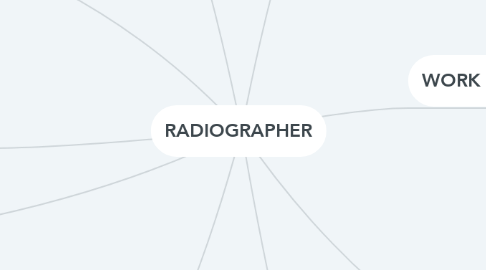RADIOGRAPHER
by melodi ing


1. PERSONAL QUALITIES AND EMPLOYABILITY SKILLS
1.1. - Accuracy
1.2. - Technology
1.3. - Organisation
1.4. - Communication
1.5. - Self-management
1.6. - Critical thinking
1.7. - Adaptability
1.8. - Confidence
1.9. - Personable
1.10. - Calmness
2. EDUCATIONAL AND TRAINING REQUIREMENTS
2.1. - To become a radiographer you will need to have completed Year 12 to then apply for a 4 year undergraduate course in medical imaging.
2.2. - This course requires a high ATAR within the high 90's and does not require any prerequisite subjects.
3. EMPLOYMENT OPPORTUNITIES AND PATHWAYS
3.1. - Employment opportunities may include working in a hospital, a private practice, the Defence Force, medical equipment companies or research and development.
3.2. - Pathways may include work experience at an imaging or radiography department or partaking in a VET course relating to health.
4. WORK HOURS
4.1. - On average, full time radiographers work 40 hours a weekly basis including evenings, nights and weekends.
4.2. - Radiographers have set schedules
4.3. - Shift work is common for radiographers who work full time
5. PAY RATES
5.1. - The median salary of a full-time radiographer averages at around $100,990/Year
6. - Use of protective clothing and safety gear such as surgical gloves, etc.
7. CAPABILITIES INVOLVED WITHIN THIS OCCUPATION
7.1. NUMERACY
7.1.1. - Calculate timings of procedures
7.1.2. - Calculating how much radiation is needed for each patient
7.2. CRITICAL & CREATIVE THINKING
7.2.1. - Analysing reports and diagnostics
7.3. INFORMATION & COMMUNICATION TECHNOLOGY
7.3.1. - Operate advanced technical equipment
7.3.2. - Communicating through ICT
7.3.3. - Retrieving, sending & analysing digital health related data
7.4. INTERCULTURAL UNDERSTANDING
7.4.1. - To understand, interact & communicate with patients from diverse cultures and ethical backgrounds
7.5. PERSONAL & SOCIAL
7.5.1. - Work both independently & with colleagues
7.5.2. - Managing relationships with patients & colleagues
7.6. LITERACY
7.6.1. - Communicating with patients or colleagues
7.6.2. - Preparing comprehensive reports of findings
